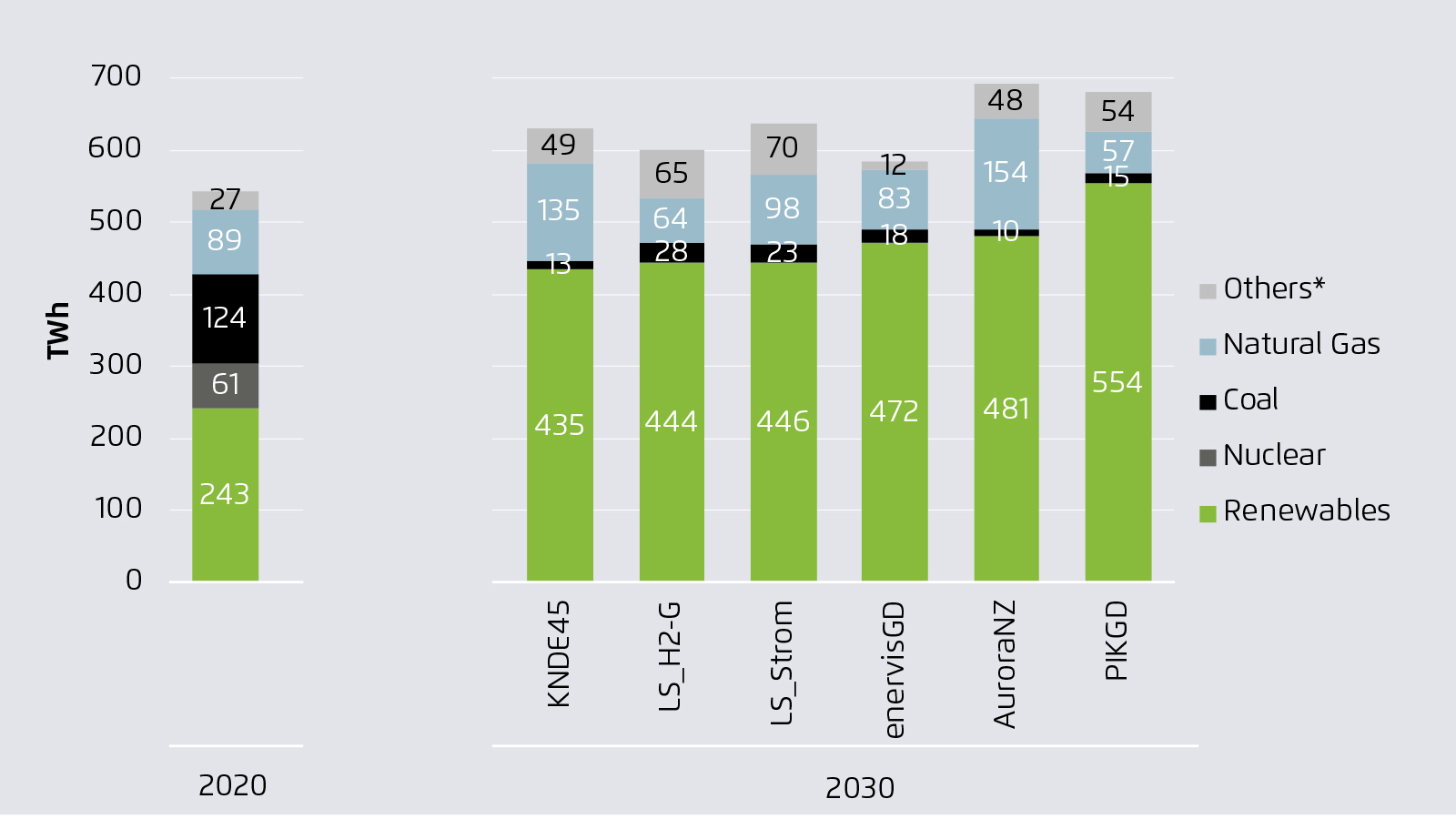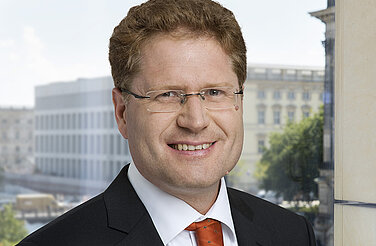-
pdf 73 KB
Comparison of scenarios
Graphic and sources
This content is also available in: German
Only one road leads to Rome
To reach its new climate target, Germany must phase out coal and triple renewable power by 2030

A hotly debated issue in the 2021 election campaign has been how Germany will achieve a 65 percent reduction in greenhouse gas emissions by 2030, as required by the country’s recently amended Climate Change Act. Though much remains up in the air, this much is clear: experts agree that Germany’s energy sector must take two critical steps over the coming years.
The chart above (Net power generation by energy source in 2020 and scenarios for achieving the 65 per cent target by 2030) compares six scenarios proposed by different research teams for meeting the targets of the European Green Deal and Germany’s new climate law.
As the figure makes clear, Germany must significantly accelerate its expansion of renewable energy. Depending on the scenario, Germany will need a total of between 435 and 554 net terawatt hours from wind, solar, biomass and hydro to reach the 2030 climate target. This is around twice as much renewable energy as the 243 terawatt hours of renewable electricity available in 2020. To get there, Germany will have to triple its current wind and solar capacity, installing an additional 5 to 6 gigawatts of onshore wind and 15 gigawatts of solar each year.
The second step indicated in the figure is a nearly complete phase-out of coal-fired power generation by 2030. In all scenarios, if Germany is to meet its 2030 target, coal electricity must fall to between 10 and 28 terawatt hours, making up only 1-5 percent of the country’s total net power generation.
Experts are less certain about the role to be played by natural gas over the next ten years. The 2030 scenarios for gas-fired-power generation range from a decrease of 25 terawatt hours to an increase of up 65 terawatt hours relative to 2020 levels. The variance is primarily the result of differing assumptions regarding electricity consumption and the power mix in neighbouring countries. The more inexpensive electricity that is available from abroad, the less natural gas Germany’s electricity sector will need.
But given that the carbon budget is limited and emissions caps are constantly tightening, no significant rise in power generation from gas-fired stations is likely. By the start of the 2030s, the share of natural gas in the power mix will have to fall continuously until it reaches zero in 2045, the year Germany hopes to achieve climate neutrality.
The scenarios leave no doubt as to the path of German climate policy in the energy industry over the next ten years. But vastly expanding wind and solar capacity and rapidly phasing out coal are about more than meeting Germany’s climate 2030 target. They are also necessary to ensure that the regions standing to be most affected by the clean-energy transition can begin planning now.
Note: The scenarios in the above figure are based on a mixture of German and EU climate targets. As the result, the performance of the scenarios vis-à-vis the 2030 German energy sector goal varies:
- The long-term hydrogen scenario (LS_H2-G) falls slightly short of the sector goal.
- The long-term electrification scenario (LS_Strom), the KNDE45 scenario and the AuroraNZ scenario meet the sector goal.
- The enervisGD and PIKGD scenarios exceed the sector goal.



